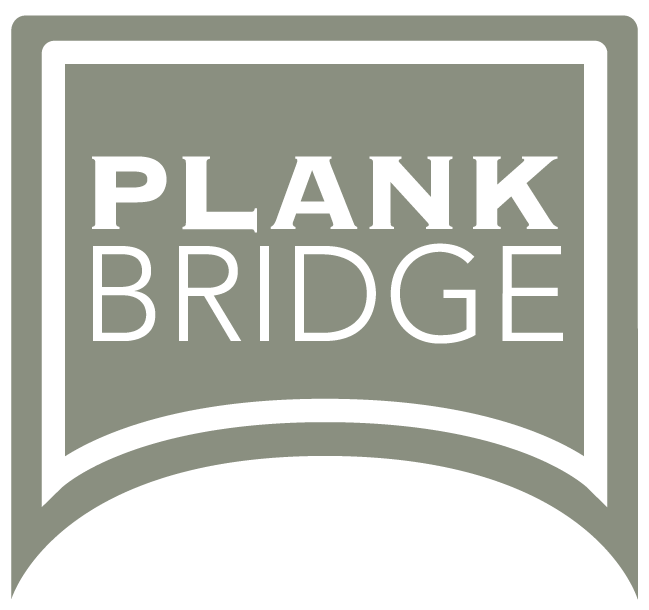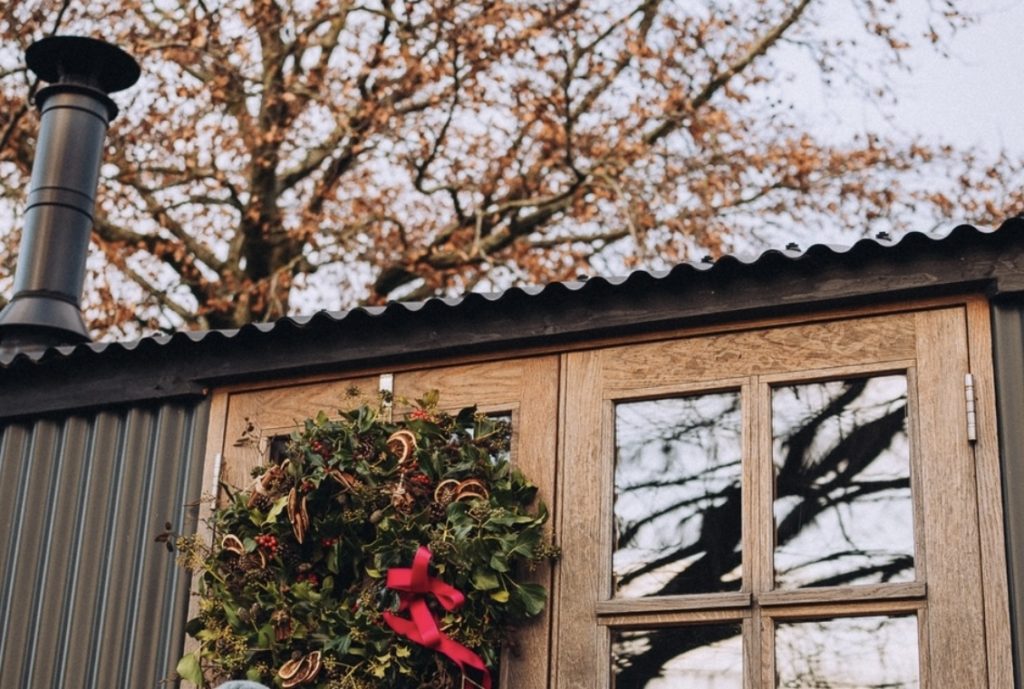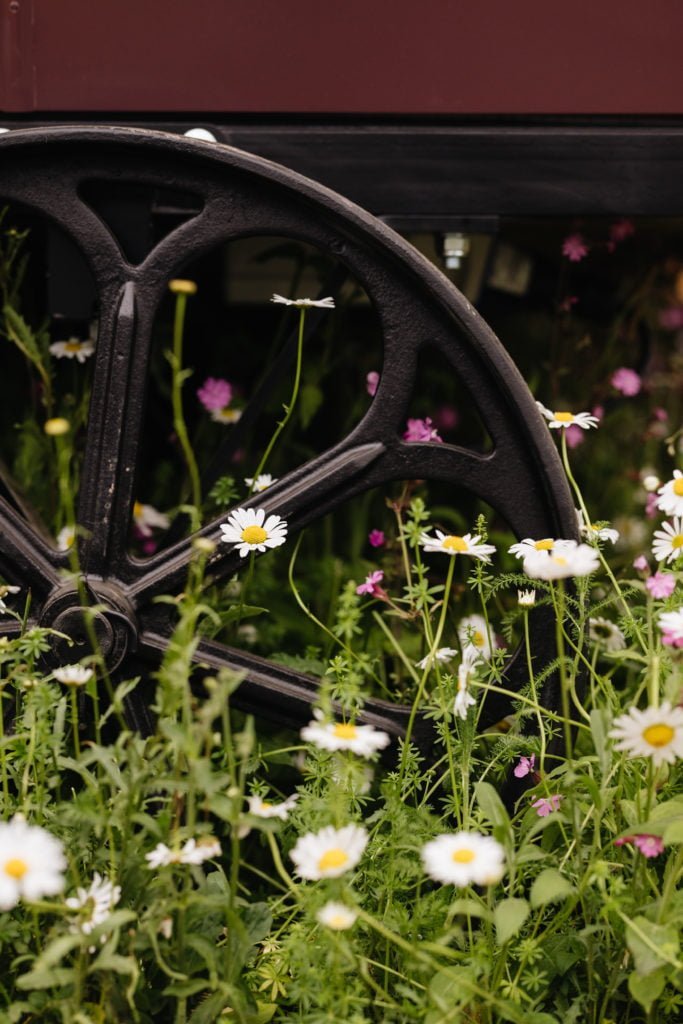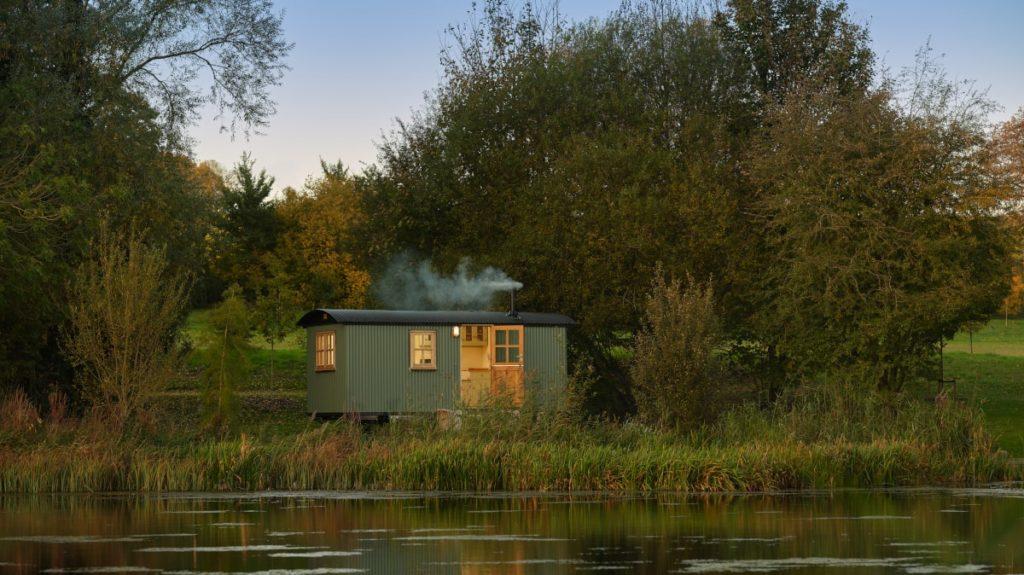Richard’s 6 top tips of things to consider in a new shepherd’s hut
As we move into Autumn 2020 I thought I would put my mind to some top tips for you if you are thinking of a shepherd’s hut, or another kind of garden building. The recent events have clearly steered many people to think of ongoing work from home office options, and there is a rising appeal of your very own space for hobbies, arts and crafts. Also you might be looking to make some income from your new hut…
1. Portability
One of the many beauties of a shepherd’s hut is that it is portable, hopefully on proper cast iron wheels so it can be moved from A to B. Some customers have a Summer spot and a Winter spot, perhaps moving it from a riverside setting up onto higher ground before the seasonal floods. A good hut has a steering axle and draw bar on a steering plate, so the wheels can pass under the sides which makes a hut very manoeuvrable.
So I would avoid anything that has been built on tiny wheels on fixed axles. That’s chicken shed territory.
2. Orientation
In the olden days a shepherd’s hut would be pulled out onto downlands and positioned with its back to the wind. That way the shepherd could have his door slightly ajar, even on a wet and windy night, and keep an ear out for the safety of his sheep. This is common sense and I would encourage you to position the door, if at all possible, on the leeward side. That way you can open and close the door without the weather blowing in.
You will remember this advice if you set up a glamping hut with double doors facing the prevailing wind – changeover days are fraught enough anyway without battling with bundles of bed linen as the driving rain blows in around your ears. If you want to make the most of the views on the windward side, then think of a double window there, rather than double doors. We offer windows with no central mullion so on high days and holidays you can throw open the windows and have nothing in your sight line, but still batten down the hatches when the bad weather comes in.
3. Maintenance
We all have busy lives, and maintenance often gets neglected. Corrugated iron is a wonderful material, and we get it galvanised, primed and pre painted in a durable factory finish. We then overpaint in our spray shop using a semi-gloss enamel made in Finland. I think colour is so important, and is the key to making your hut blend into the locality. You may want to be more adventurous which is fine too, whatever floats your boat, but it’s always good to consider the wider landscape.
Our own Plankbridge colour cards has a range of nature inspired colours, or choose colours that you have used before, maybe matching in with your house windows and doors. The corrugated cladding could just be left to fade to a nice patina, there being several protective layers to weather through over several decades. Repainting every 8 to 10 years is easy too. The other option is to clad in painted timber, we particularly love black weatherboarding, which will require more maintenance. Or you can choose naturally durable timbers like oak or Douglas fir, which you simply leave to weather to silver. Not to everyone’s taste, but it can look good if it is fixed professionally and weathers evenly.
4. Window Position
Window position is sometimes neglected, but what an opportunity you have here. I completely understand that the advice on doors above is ‘in an ideal world.’ You may simply need to, or would just rather, have the door or double doors facing the view, which is often also into the prevailing wind. When planning your hut or garden room it’s a good idea to sketch or print off a plan and pin it to some card. Stand in your garden or field and orientate the plan to the boundaries.
Imagine being in the hut; if there is a bed which way would it be best to lie? Maybe you will be able watch the sun rise from the bed, so you may want a window positioned to achieve that. Often customers are surprised at what a difference the 2’ off the ground makes. Perhaps you could stand (safely) on something two feet high. You may be able to see over a wall or fence and see beyond to a view you didn’t know you had. In which case this may inform the way you layout your hut. Learn more about the importance of the shepherd’s hut bed here. If it’s a home office the view from your desk is important, and may make all the difference to inspire you as you embark on that first novel.
5. First Impressions
If you are creating a holiday glamping space, or a guest room for family and friends, I would think carefully about that first impression. After a long drive how would they feel to approach the hut, mount the steps and open the door? A wall bed is seen as a bit gimmicky, if a bit ‘motor homey’, but we do have several ways of doing those. In a ‘just arrived, tired and befuddled’ state it would be much nicer to open the door and see everything before you that you dreamt of for a few nights away: comfy bed, all made up and cosy, a small tidy kitchen, fresh bread on the side, with wine glasses at the ready. A neat fridge behind a cupboard door, with a chilled bottle of white, butter, cheese and milk. Slide open the barn door to the shower room and the heated towel rail is on for a cosy feel, fluffy white towels neatly folded, some indulgent pungent potions on the shelf.
Get the first impressions right and you are onto a winner – everyone is happy.
6. Other Items
And finally… here’s a stream of thoughts of what to look for, in no particular order. Slotted screws on the hinges, slots all lined up nice and neat (cross head posidrive screws on show are laziness personified) Hinges in the right place. You will know what’s right when you see it done wrong, and it’s all too often done wrong. There’s some, secret, magic formulas to this. T hinges look wrong on a framed ledge and brace door. Use butt hinges on thicker doors, T hinges on a thinner ledge and brace. If its corrugated clad, look for neatly folded corners where the cladding wraps around, just like the old originals. You see some travesties where the corners are covered by wooden strips which look really bad, if you know your onions.
Avoid the travesties and the carbuncles, life is too short to allow them into your lives. You get what you pay for, so aim high and look for the all-important enthusiasm and skill from the craftspeople you commission. You will be supporting them in the tradition of the Arts and Crafts movement. Hutmaking is an art like any other, and as John Ruskin said, ‘…art is that in which the hand, the head and the heart … go together.’







